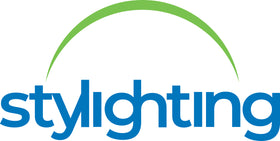Recent advancements in lighting technologies have significantly changed how we illuminate our living and business spaces. Among these, LED lighting stands out for its energy efficiency and longevity. However, LED lighting’s impact goes beyond practical benefits. It’s clear that the type of light we are exposed to can deeply affect our sleep patterns and circadian rhythms.
Understanding these effects is essential for optimizing our health and well-being. We’re here to explore the relationship between LED lighting and the biological processes that govern our sleep patterns and circadian rhythms, offering valuable insights for making informed lighting choices.
Understanding Circadian Rhythms
Your body’s circadian rhythm is a natural, internal process that regulates people’s sleep-wake cycles. External cues like light and temperature are the main components that influence these rhythms, but light is the more powerful of the two. That’s because it signals to your body when it is time to be awake and when it is time to sleep. Disruptions in these rhythms can lead to various health issues, including insomnia, depression, and even metabolic disorders.
Traditional Lighting and Sleep
Traditional lighting, such as incandescent bulbs and fluorescent lights, emits a broad spectrum of light, including blue wavelengths. Blue light is known to suppress the production of melatonin, the hormone responsible for regulating sleep. Exposure to this type of light during the evening can delay the onset of sleep and disrupt your circadian rhythms. This is particularly problematic in settings where people are exposed to artificial lighting for extended periods, such as offices and healthcare facilities.
Where LED Lighting Technology Comes Into Play
While LEDs are energy-efficient and have a longer lifespan, their most significant advantage lies in their ability to emit specific wavelengths of light. That means you can minimize blue light from your LED bulbs when needed. This feature allows LED lighting to have a significant impact on sleep patterns. The reduction of blue light minimizes the disruption of circadian rhythms.
Practical Applications of LED Lighting
Of course, none of this means much if you can’t apply it practically. In homes, you can program LED light systems to mimic natural light patterns, gradually dimming as bedtime approaches to signal to your body that it is time to wind down. You can take this a step further by getting lamps with lights that mimic sunlight. In offices, using LED lighting that adjusts throughout the day can help improve employee well-being and productivity by aligning with natural circadian rhythms. Healthcare facilities can benefit from LED lighting by creating environments that promote better sleep for patients, aiding in recovery and overall health. Regardless of the application, you can improve the overall health of those around you by utilizing LED lighting options.

